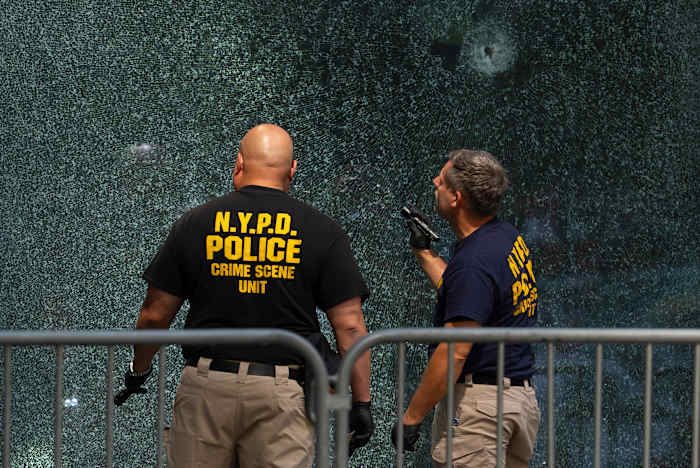A tragic shooting that claimed four lives in a Manhattan office building last summer has taken on new significance following the confirmation that the perpetrator suffered from chronic traumatic encephalopathy (CTE), a degenerative brain disease commonly associated with contact sports and repeated head trauma. The case of Shane Tamura, 27, who accurately self-diagnosed his condition before carrying out the deadly attack, has reignited critical discussions about mental health support, brain injury recognition, and the complex relationship between neurological damage and violent behavior.
Understanding the Manhattan Office Tower Tragedy
The shooting occurred during the summer of 2024 in a Manhattan office building that houses NFL offices, adding an ironic dimension to a case involving a brain disease closely linked to football. Shane Tamura’s case represents a troubling intersection of undiagnosed mental health issues and violent outcomes, highlighting gaps in our healthcare system’s ability to identify and treat individuals suffering from traumatic brain injuries.
What makes this case particularly striking is that Tamura had apparently self-diagnosed his CTE condition. This self-awareness suggests he understood the deterioration occurring in his brain, yet the tragedy still unfolded, raising questions about the availability and accessibility of appropriate mental health resources for individuals struggling with such conditions.
Chronic Traumatic Encephalopathy: The Silent Epidemic
What is CTE?
Chronic Traumatic Encephalopathy is a progressive neurodegenerative disease found in people with a history of repetitive brain trauma. CTE can currently only be definitively diagnosed posthumously through brain tissue examination, making it a particularly challenging condition for both patients and healthcare providers to address during a person’s lifetime.
The disease is characterized by the accumulation of tau protein in the brain, leading to symptoms that can include:
- Memory loss and confusion
- Impaired judgment and decision-making
- Impulse control problems
- Aggression and violent behavior
- Depression and suicidal ideation
- Progressive dementia
The Sports Connection and Beyond
While CTE gained widespread attention through its association with professional football players, the condition affects a much broader population. Military veterans exposed to blast injuries, victims of domestic violence, individuals involved in car accidents, and participants in various contact sports can all develop CTE. The case of Shane Tamura underscores that this isn’t solely a “sports disease” but a public health issue affecting diverse populations.
Recent studies suggest that CTE may be more prevalent than previously understood. The Boston University CTE Center has identified the disease in the brains of 345 out of 376 former NFL players studied, representing a staggering 92% rate. However, these numbers likely represent only the tip of the iceberg, as many cases go undiagnosed due to the current limitations in detection methods.
The Diagnostic Challenge and Self-Recognition
Tamura’s ability to self-diagnose his condition raises important questions about symptom recognition and the desperation that can arise when individuals understand their deteriorating mental state but lack adequate support systems. The fact that he correctly identified his condition suggests a level of self-awareness that makes the subsequent violence even more tragic.
Currently, healthcare providers must rely on symptom presentation and behavioral changes to suspect CTE in living patients. This diagnostic uncertainty creates a challenging environment for both patients and families, who may struggle to understand and cope with personality changes and cognitive decline without a definitive diagnosis.
Implications for Mental Health Policy and Support
The Gap in Care
This tragic case highlights significant gaps in mental health care, particularly for individuals with suspected neurodegenerative conditions. The current mental health system often struggles to provide adequate support for complex cases involving brain injury and associated behavioral changes. Many individuals fall through the cracks, particularly when their conditions don’t fit neatly into existing diagnostic categories or treatment protocols.
The Manhattan shooting demonstrates the potential consequences when individuals with severe mental health conditions don’t receive appropriate intervention. It raises questions about whether earlier recognition and treatment might have prevented this tragedy, and what systemic changes could improve outcomes for others in similar situations.
Legal and Ethical Considerations
The CTE diagnosis also raises complex legal and ethical questions about responsibility and culpability in cases involving individuals with documented brain damage. While this doesn’t excuse violent behavior, it does complicate our understanding of criminal responsibility and highlights the need for more nuanced approaches to justice that consider neurological factors.
Prevention and Early Intervention Strategies
Preventing future tragedies requires a multi-faceted approach addressing both the underlying causes of CTE and the support systems for those affected:
Improving Recognition and Response
- Enhanced training for healthcare providers in recognizing signs of traumatic brain injury and associated behavioral changes
- Development of better diagnostic tools for identifying CTE in living patients
- Improved integration between neurological and mental health services
- Creation of specialized support programs for individuals with suspected neurodegenerative conditions
Addressing Root Causes
Long-term prevention efforts must also focus on reducing the incidence of repetitive brain trauma across all populations, not just professional athletes. This includes improved safety protocols in sports, better protection for military personnel, enhanced domestic violence prevention programs, and improved vehicle safety standards.
The Broader Societal Impact
The Manhattan office shooting serves as a stark reminder of how individual mental health crises can have far-reaching consequences for families, communities, and society as a whole. The four victims and their families represent the ultimate cost of our collective failure to address mental health issues comprehensively.
This case also highlights the interconnected nature of public health challenges, where issues in sports safety, military service, domestic violence, and mental health care all converge in tragic ways. Addressing these challenges requires coordinated efforts across multiple sectors and a recognition that brain health is fundamental to public safety.
Moving Forward: Lessons and Recommendations
The tragic events in Manhattan offer several critical lessons for policymakers, healthcare providers, and communities:
- Investment in brain injury research and treatment must be prioritized
- Mental health support systems need significant strengthening and expansion
- Early intervention programs for individuals with brain injuries should be developed
- Greater awareness of CTE symptoms among the general public is essential
- Integration of mental health services with neurological care must be improved
Key Takeaways
- CTE affects far more than just professional athletes, impacting diverse populations exposed to repetitive brain trauma
- The current inability to diagnose CTE in living patients creates significant challenges for treatment and support
- Mental health support systems need substantial improvement to address complex cases involving brain injury
- Early recognition and intervention could potentially prevent tragic outcomes in similar cases
- This case demonstrates the urgent need for integrated approaches to brain health and mental health care
- Public awareness and education about CTE symptoms are crucial for early identification and support
The confirmation of CTE in Shane Tamura’s case transforms this tragedy from an isolated incident of workplace violence into a broader indictment of our society’s approach to brain health and mental health care. As we continue to understand the far-reaching impacts of repetitive brain trauma, we must also commit to building the support systems necessary to help those affected before desperation leads to tragedy.

Born and raised amidst the hustle and bustle of the Big Apple, I’ve witnessed the city’s many exciting phases. When I’m not exploring the city or penning down my thoughts, you can find me sipping on a cup of coffee at my favorite local café, playing chess or planning my next trip. For the last twelve years, I’ve been living in South Williamsburg with my partner Berenike.

